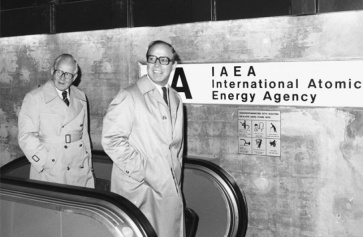IAEA issues a “Technical Study on Different Modalities of Application of Safeguards in the Middle East”

The study, prepared by the IAEA Director-General, pursuant to General Conference resolution GC(XXXII)/RES/487 on “Israeli nuclear capabilities and threat”, analyzed the status of nuclear activities and safeguards in the Middle East, described the IAEA’s experience in applying safeguards under different types of agreements, and identified several modalities that could be used to enhance the application of safeguards in the Middle East. These included: adherence by all states in the region to the NPT and conclusion of the relevant safeguards agreements, and/or establishment of a nuclear-weapon-free zone and the conclusion of associated safeguards agreements. When discussing the geographical boundaries of the Middle East, the report noted that although there is no official definition of the Middle East as a region in UN documents or in resolutions adopted by the UN General Assembly, for the purpose of the IAEA study the region has been taken as including the area extending from “the Libyan Arab Jamahiriya in the west, to the Islamic Republic of Iran in the east, and from Syria in the north to the People’s Democratic Republic of Yemen in the south.”
Photo credit: IAEA
Outgoing IAEA Director General Dr. Sigvard Eklund (Left) and incoming IAEA Director General Dr. Hans Blix (Right) in 1981


